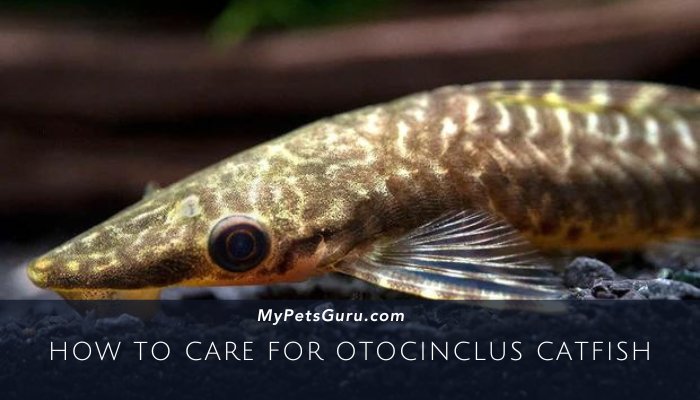If you’re looking for a small and adorable addition to your aquarium, the Otocinclus catfish is an excellent choice. These tiny algae-eating fish, also known as “otos” or “dwarf suckers,” are popular among aquarium enthusiasts for their ability to keep your tank clean and algae-free. In addition to their charming appearance, Otocinclus catfish are peaceful and easy to care for, making them an ideal choice for both beginner and experienced fish keepers.
In this article, we will guide you through the essentials of caring for Otocinclus catfish. From setting up the perfect tank environment to feeding and breeding, we will cover everything you need to know to ensure the health and happiness of your Otocinclus catfish.
Key Takeaways
Before diving into the details, let’s provide you with a quick overview of the key points you need to remember when caring for Otocinclus catfish:
| Key Takeaways |
|---|
| Otocinclus catfish are small, peaceful, and adorable algae eaters |
| They prefer well-maintained, planted aquariums with hiding spots |
| Provide a varied diet including algae wafers and fresh vegetables |
| Maintain proper water conditions with regular water changes |
| Be cautious when introducing new tank mates to avoid aggression |
Now, let’s explore these key points in more depth.
Setting up the Perfect Tank Environment
Creating the perfect habitat for your Otocinclus catfish is crucial for their health and well-being. Here are some factors to consider when setting up their tank:
Tank size and water parameters:
Otocinclus catfish are relatively small, so a tank size of at least 10 gallons should be sufficient for a small group of these fish. Ensure that the water temperature is kept between 72°F and 80°F (22°C and 27°C) and maintain a pH level between 6.5 and 7.5. It’s important to invest in a good quality heater and thermometer to monitor and maintain the ideal temperature.
Aquascape and hiding spots:
Create a well-planted aquarium with plenty of hiding spots for your Otocinclus catfish. They love to explore and hide, so provide them with ample hiding places such as driftwood, rocks, and caves. Dense vegetation, like Java moss or Amazon sword plants, will not only provide hiding spots but also help with maintaining water quality.
Tank mates:
Otocinclus catfish are peaceful community fish and can be kept with other small, non-aggressive species. Great tank mates for Otocinclus catfish include tetras, rasboras, and small corydoras catfish. However, avoid keeping them with larger and more aggressive fish, as they may bully or harm the Otocinclus.
Filtration and water quality:
Maintaining good water quality is essential for the health of your Otocinclus catfish. Invest in a good filtration system to keep the water clean and free of toxins. Perform regular water changes of about 25% every one to two weeks to prevent the accumulation of harmful substances in the tank.
Feeding Your Otocinclus Catfish
Otocinclus catfish are primarily herbivorous and have a specialized diet. While they will graze on algae in the tank, it’s important to supplement their diet with other nutritious foods:
-
Algae wafers: These can be found in pet stores and are specifically formulated to cater to the dietary needs of Otocinclus catfish. Ensure that the wafers sink to the bottom of the tank so that your Otocinclus can easily access them.
-
Fresh vegetables: Otocinclus catfish appreciate a diet rich in fresh vegetables. Blanched zucchini, cucumber, and spinach are excellent choices. However, remember to remove any uneaten vegetables from the tank after a few hours to prevent water quality issues.
-
Supplemental foods: In addition to algae wafers and vegetables, occasional feeding of high-quality flake or pellet foods designed for herbivorous fish is recommended. This will help provide a balanced diet for your Otocinclus catfish.
Breeding Your Otocinclus Catfish
While breeding Otocinclus catfish in a home aquarium can be challenging, it’s not impossible. Here are a few tips to encourage breeding:
-
Separate breeding tank: Set up a separate breeding tank with similar water conditions to the main tank. Provide dense vegetation and hiding spots, like small clay pots or spawning mops, where the female can lay her eggs.
-
Feeding high-quality food: To encourage breeding behavior, offer a variety of high-quality foods including live or frozen daphnia and brine shrimp. These foods will help condition the fish and increase their reproductive success.
-
Ideal water conditions: Maintain excellent water quality with regular water changes and ensure the temperature and pH levels are suitable for breeding. Keep the water temperature around 77°F (25°C) and maintain a pH level between 6.5 and 7.0.
-
Patience: Breeding Otocinclus catfish can take time and patience. Be prepared for unsuccessful attempts and continue to provide optimal conditions until breeding is successful.
Otocinclus catfish are delightful little creatures that bring life and beauty to aquariums. With proper care, a suitable tank environment, and a varied diet, these algae-eating catfish will thrive and provide endless entertainment. So, go ahead, set up your Otocinclus catfish tank, and enjoy the benefits of having these charming fish in your home.

Hi, I’m Lila Hart, and I’m just as fish-obsessed as they come! I’ve been enamored with aquatic life since I was a little kid. Now, I’m a marine biologist with over 3 years of hands-on experience in the world of pet fish.
I’ve learned the ropes of fishkeeping through trial and error, and I’m excited to share my knowledge with you. My mission is to help you create a thriving aquatic paradise for your finned companions. Together, we’ll explore the fascinating underwater world of pet fish!

